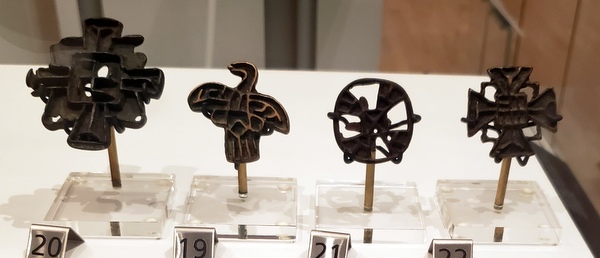Difference between revisions of "Nestorian Christianity"
| Line 3: | Line 3: | ||
Nestorian Christianity, also known as the Church of the East or the Assyrian Church of the East, is a branch of Christianity which was the dominant form of Christianity in China for nearly a thousand years before the arrival of Catholicism and Protestantism in the 16th-17th centuries. | Nestorian Christianity, also known as the Church of the East or the Assyrian Church of the East, is a branch of Christianity which was the dominant form of Christianity in China for nearly a thousand years before the arrival of Catholicism and Protestantism in the 16th-17th centuries. | ||
| − | The Nestorians were expelled from the Roman Church in the 400s, due to heterodox beliefs about the nature of Christ. By [[638]], the Nestorian Church had spread all the way to [[Tang Dynasty]] China. | + | The Nestorians were expelled from the Roman Church in the 400s, due to heterodox beliefs about the nature of Christ. By [[638]], the Nestorian Church had spread all the way to [[Tang Dynasty]] China. A [[781]] stele alleges that "there was a man of great virtue in the Roman Empire, whose name was Aluoben. Auguring from the azure clouds, he decided to bring the true scriptures, and ... made his way through difficulties and perils [arriving in 635] in Chang'an."<ref name=rom>Gallery labels, Royal Ontario Museum.[https://www.flickr.com/photos/toranosuke/48532549207/in/photostream/][https://www.flickr.com/photos/toranosuke/48532547867/in/photostream/]</ref> |
| − | In the [[Yuan dynasty]] (13th-14th c.), nomadic groups in Mongolia, to the north and west of [[Beijing]], included some particularly strong centers of Nestorianism. Crosses and other items in bronze or iron have been found in burials from the time.<ref | + | In the [[Yuan dynasty]] (13th-14th c.), nomadic groups in Mongolia, to the north and west of [[Beijing]], included some particularly strong centers of Nestorianism. Crosses and other items in bronze or iron have been found in burials from the time.<ref name=rom/> |
{{stub}} | {{stub}} | ||
Latest revision as of 19:12, 14 August 2020

Nestorian Christianity, also known as the Church of the East or the Assyrian Church of the East, is a branch of Christianity which was the dominant form of Christianity in China for nearly a thousand years before the arrival of Catholicism and Protestantism in the 16th-17th centuries.
The Nestorians were expelled from the Roman Church in the 400s, due to heterodox beliefs about the nature of Christ. By 638, the Nestorian Church had spread all the way to Tang Dynasty China. A 781 stele alleges that "there was a man of great virtue in the Roman Empire, whose name was Aluoben. Auguring from the azure clouds, he decided to bring the true scriptures, and ... made his way through difficulties and perils [arriving in 635] in Chang'an."[1]
In the Yuan dynasty (13th-14th c.), nomadic groups in Mongolia, to the north and west of Beijing, included some particularly strong centers of Nestorianism. Crosses and other items in bronze or iron have been found in burials from the time.[1]
References
- Colleen Ho, "Rabban Sauma: A Medieval Eurasian Traveler & Diplomat of Many Identities," Shape Shifters: Journeys Across Terrains of Race and Identity conference, University of California, Santa Barbara, 18 March 2016.